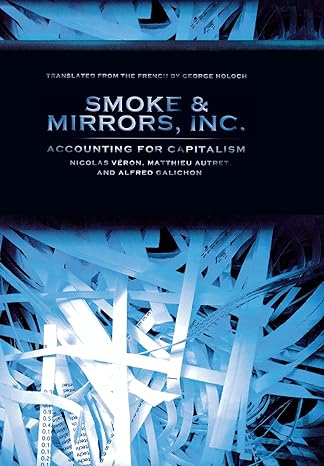Question
The whole question has been posted. If you think you need more info and cannot work it out, don't answer this question. Please make sure
The whole question has been posted. If you think you need more info and cannot work it out, don't answer this question.
Please make sure you answer the questions using the item words given and according to the blanks. Otherwise, don't answer it. And the bad rate will be given.
Entity A is a furniture manufacturer in Hong Kong which commenced its business more than forty years.
On 1 January 2017, Entity A bought a $2,800,000 - 5.25% bond. The bond price was $3,229,500 and the transaction cost was $35,205 respectively. Entity A paid the amounts to the issuer by a bank cheque. Fixed interest is received in arrears. The bond will be redeemed at a 25% premium on 31 December 2019. The bond is expected to hold to maturity. The fair value option was not adopted at the initial recognition.
The effective interest rate is 6.75%. The market environment is assumed credit risk-free.
On 31 Dec 2018, due to the cash shortage, Entity A did not prefer to hold the bond until maturity and only preferred to short sell it as soon as possible.
On 15 May 2019, Entity A decided to sell the bond to an independent third party for $3,300,000 and the contract was arranged to be signed on 31 July 2019. However, the buyer did not appear to sign the contract on that day.
Entity A was continuously seeking other buyers. Eventually, Entity A could not successfully sell the bond to others until the maturity date.
The fair values of the bond were as follows:
- 31 December 2017 $3,520,000
- 31 December 2018 $3,425,000
- 1 January 2019 $3,050,000
- 15 May 2019 $3,250,000
- 31 July 2019 $3,365,000
- 31 December 2019 $3,180,000
The end of the reporting period is 31 December.
REQUIRED:
Provide journal entries for Entity A from 1 January 2017 to 31 December 2019 in accordance with relevant accounting standards.
ACCOUNTS FOR INPUT:
| Financial asset (Amortised Cost) | Financial asset (FVTPL) | Financial asset (FVTOCI) |
| Financial liability | Equity instrument | Transaction cost | Bank | Loss allowance | Impairment loss | Reversal of impairment loss |
| Gain on remeasurement (P/L) | Loss on remeasurement (P/L) | Gain on remeasurement (OCI) | Loss on remeasurement (OCI) |
| Payable | Receivable | Other income | Other expense | Reclassification (P/L) | Reclassification (OCI) |
| Interest expense | Interest revenue | Loss on disposal | Gain on disposal | Retained earnings | No entry |
ANSWERS:
Journal Entries:
| Date | Account Name | Debit ($) | Credit ($) | Hints For Sequence |
| 1-Jan-17 | - | |||
| - | ||||
| 31-Dec-17 | - | |||
| Judge Dr/Cr. Only Enter Amount. | ||||
| Not an Asset. Judge Dr/Cr. Only Enter Amount. | ||||
| 31-Dec-18 | - | |||
| Judge Dr/Cr. Only Enter Amount. | ||||
| Not an Asset. Judge Dr/Cr. Only Enter Amount. | ||||
| 31-Dec-18 | - | |||
| - | ||||
| 31-Dec-18 | - | |||
| - | ||||
| 1-Jan-19 | - | |||
| - | ||||
| 1-Jan-19 | - | |||
| - | ||||
| 15-May-19 | - | |||
| - | ||||
| 31-Jul-19 | - | |||
| - | ||||
| 31-Dec-19 | - | |||
| - | ||||
| 31-Dec-19 | - | |||
| - | ||||
| 31-Dec-19 | - | |||
| Not an Asset. Judge Dr/Cr. Only Enter Amount. | ||||
| Judge Dr/Cr. Only Enter Amount. | ||||
| Judge Dr/Cr. Only Enter Amount. | ||||
Step by Step Solution
There are 3 Steps involved in it
Step: 1

Get Instant Access to Expert-Tailored Solutions
See step-by-step solutions with expert insights and AI powered tools for academic success
Step: 2

Step: 3

Ace Your Homework with AI
Get the answers you need in no time with our AI-driven, step-by-step assistance
Get Started


